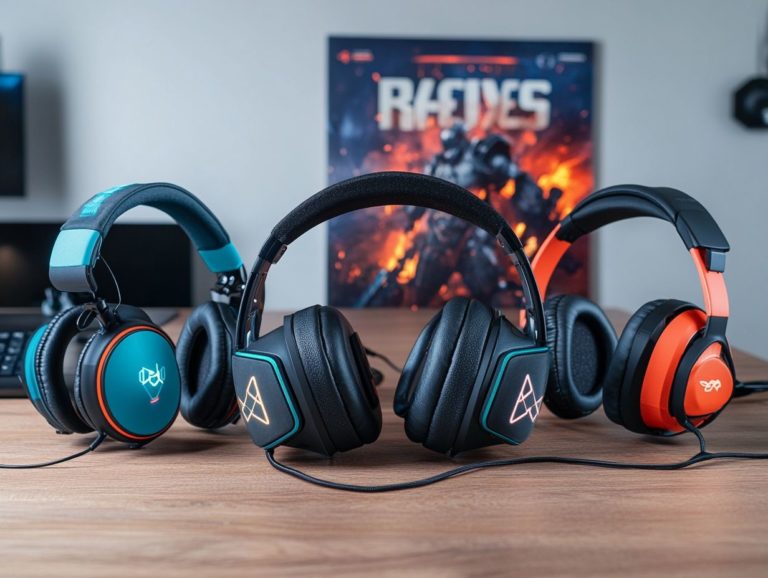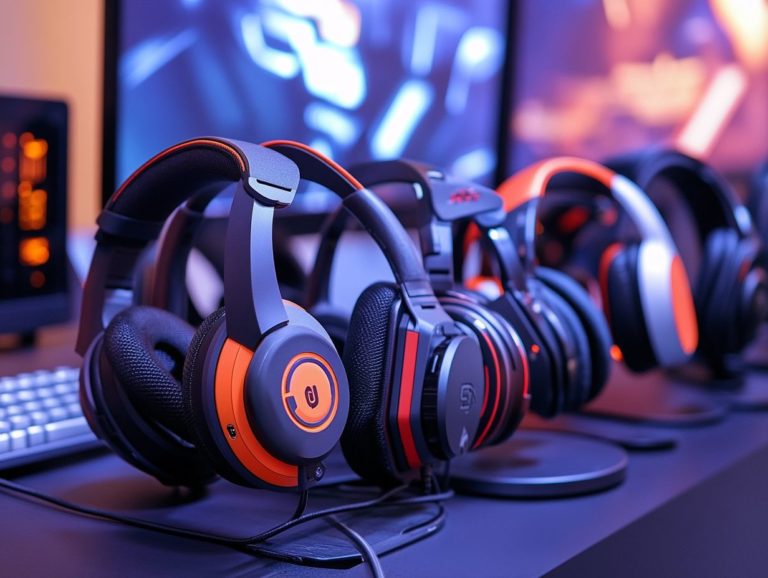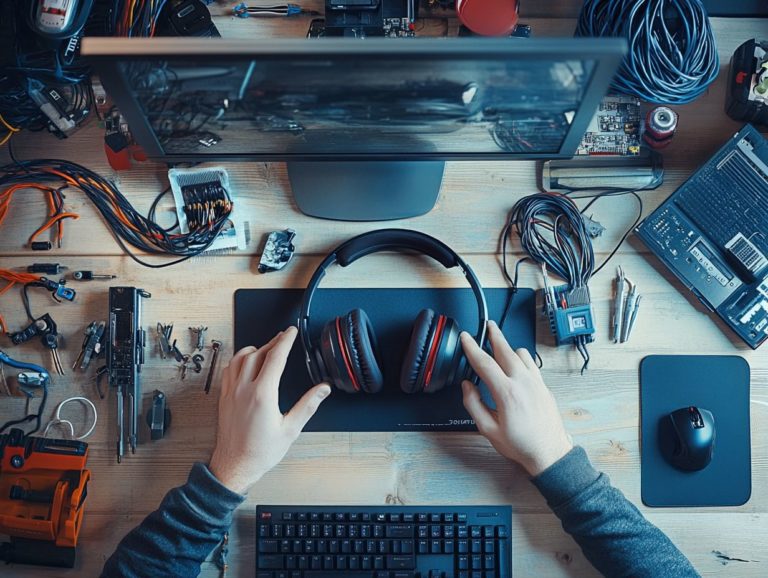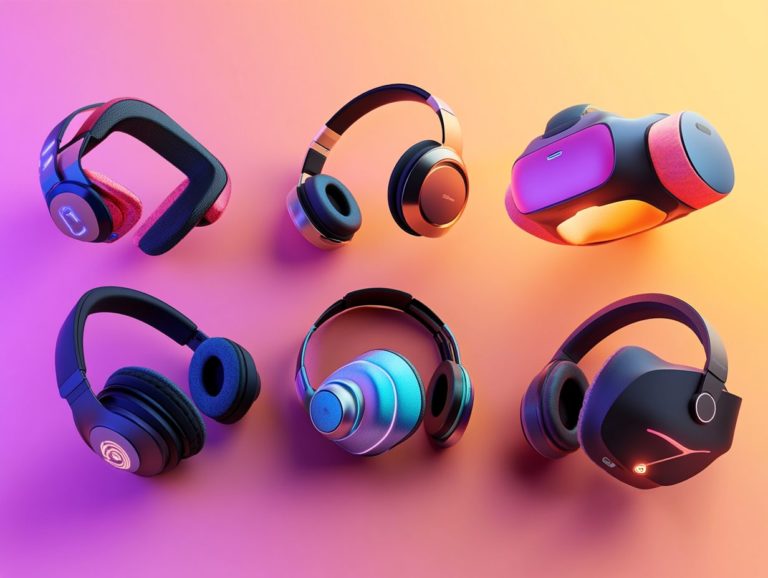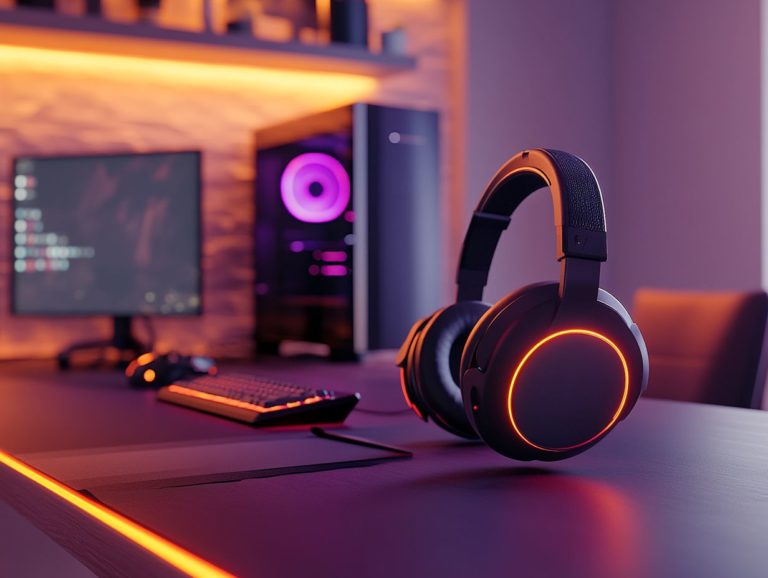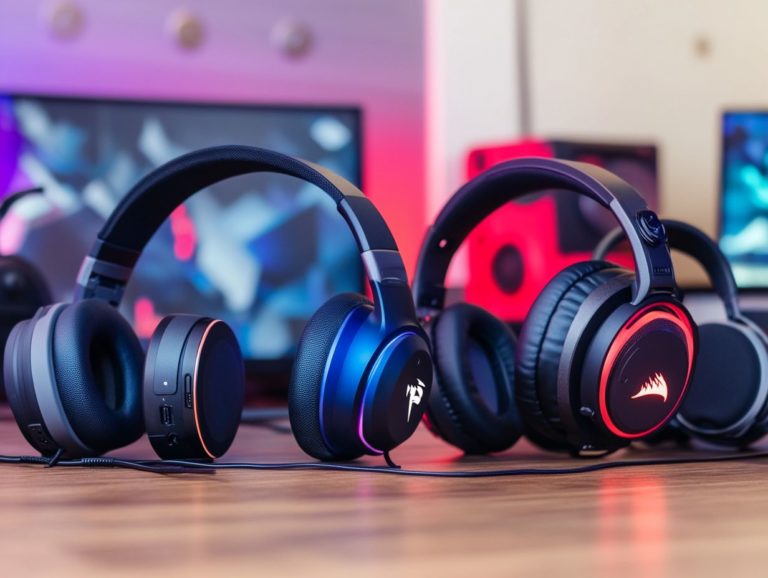headset compatibility: what you need to know
Finding the perfect headset can feel like navigating a maze, especially with the many connections and compatibility concerns that often arise.
This guide is your comprehensive resource on headset compatibility. We’ll dive into the differences between wired and wireless options while ensuring your device supports your chosen headset.
Explore various connection types, troubleshoot common issues, and discover valuable tips for selecting a headset that perfectly meets your needs.
Get ready to transform your audio experience!
Contents
- Key Takeaways:
- Understanding Headset Compatibility
- Types of Headset Connections
- Compatibility with Devices
- Factors to Consider for Headset Compatibility
- Troubleshooting Compatibility Issues
- Tips for Choosing a Compatible Headset
- Preguntas Frecuentes
- Qu es la compatibilidad de auriculares y por qu es importante saberlo?
- C mo puedo saber si un auricular es compatible con mi dispositivo?
- Todos los auriculares son compatibles con todos los dispositivos?
- Puedo usar un auricular con un dispositivo que tiene una marca o sistema operativo diferente?
- Cu les son los diferentes tipos de compatibilidad de auriculares?
- C mo puedo asegurarme de que mi auricular ser compatible con dispositivos futuros?
Key Takeaways:
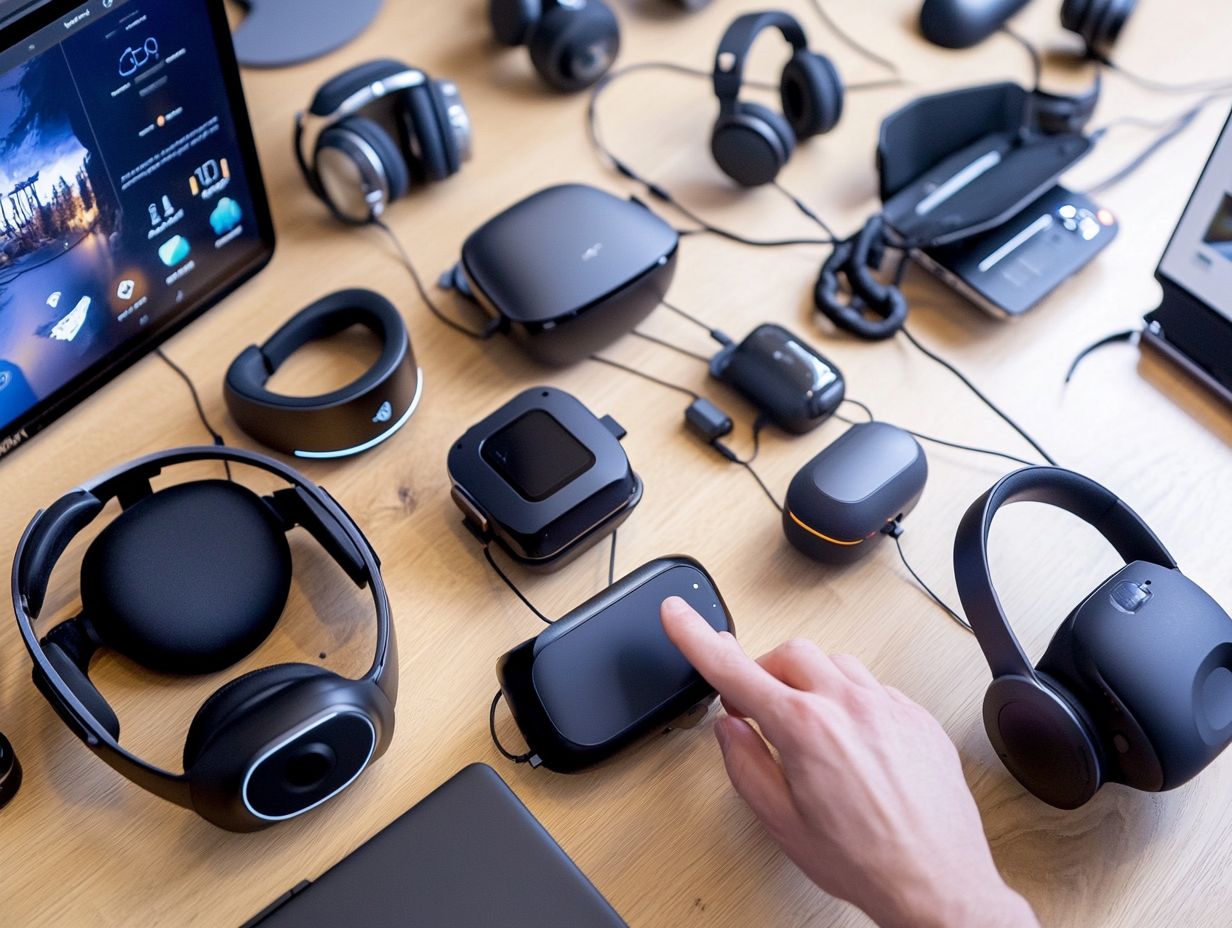
1. **Headset compatibility** means your headset can work well with various devices and systems, allowing for seamless communication and audio experience.
2. There are two types of headset connections: **wired** and **wireless**, with wireless options including **USB** and **Bluetooth**. Consider your needs and device compatibility when choosing a type.
3. Compatibility with devices varies based on operating systems and device types. It’s important to check if your headset is compatible before purchasing.
Understanding Headset Compatibility
Understanding headset compatibility is crucial for getting the best experience, particularly with different devices and operating systems.
In today s market, you ll find a range of headsets, from wireless to corded models, each designed for specific uses like phone calls or office integration.
Having access to a comprehensive compatibility guide empowers you to choose the perfect headset that meets your requirements, ensuring you don t have to compromise on audio quality or features.
What is Headset Compatibility?
Headset compatibility is about your headset’s ability to work with a variety of devices, ensuring you enjoy optimal audio quality and connectivity through interfaces like the headset jack. Additionally, understanding what you should know about headset impedance can enhance your experience further.
Several factors influence this compatibility, including the type of connection you choose whether it s the convenience of wireless Bluetooth or the reliability of traditional wired connections.
For example, Bluetooth headsets allow you to move freely while connecting smoothly with smartphones, laptops, and tablets, as long as those devices support the necessary Bluetooth version.
On the other hand, headsets with **EHS (Electronic Hook Switch)** cables are designed for specific phone models, especially in office settings. EHS allows for remote answering of calls.
Audio quality standards like **aptX** or **LDAC** for Bluetooth audio can significantly enhance your listening experience, highlighting the importance of evaluating both the technology and your devices.
Types of Headset Connections
You ll find a range of headset connections available today, from wired options that use a traditional headset jack to wireless solutions that leverage Bluetooth technology for easier communication.
Wired vs. Wireless
Wired headsets generally offer consistent audio quality without interference, while wireless options provide freedom of movement and flexibility. They often come equipped with noise-canceling capabilities and quick disconnect features for your comfort.
This is especially beneficial if you’re in customer service or a remote work setting, where seamless communication is essential.
Wired models excel in delivering rich, clear sound with minimal latency, but the cords can be cumbersome, making them less ideal for fast-paced environments.
In contrast, wireless headsets shine in mobility, allowing you to multitask without being tethered to your desk. However, be mindful of potential connectivity issues and battery life concerns that may arise.
Noise-canceling features in both types can greatly enhance your focus, making them perfect for open offices or home setups where distractions are common.
Ready to find the right headset for you? Start exploring your options today!
USB vs. Bluetooth
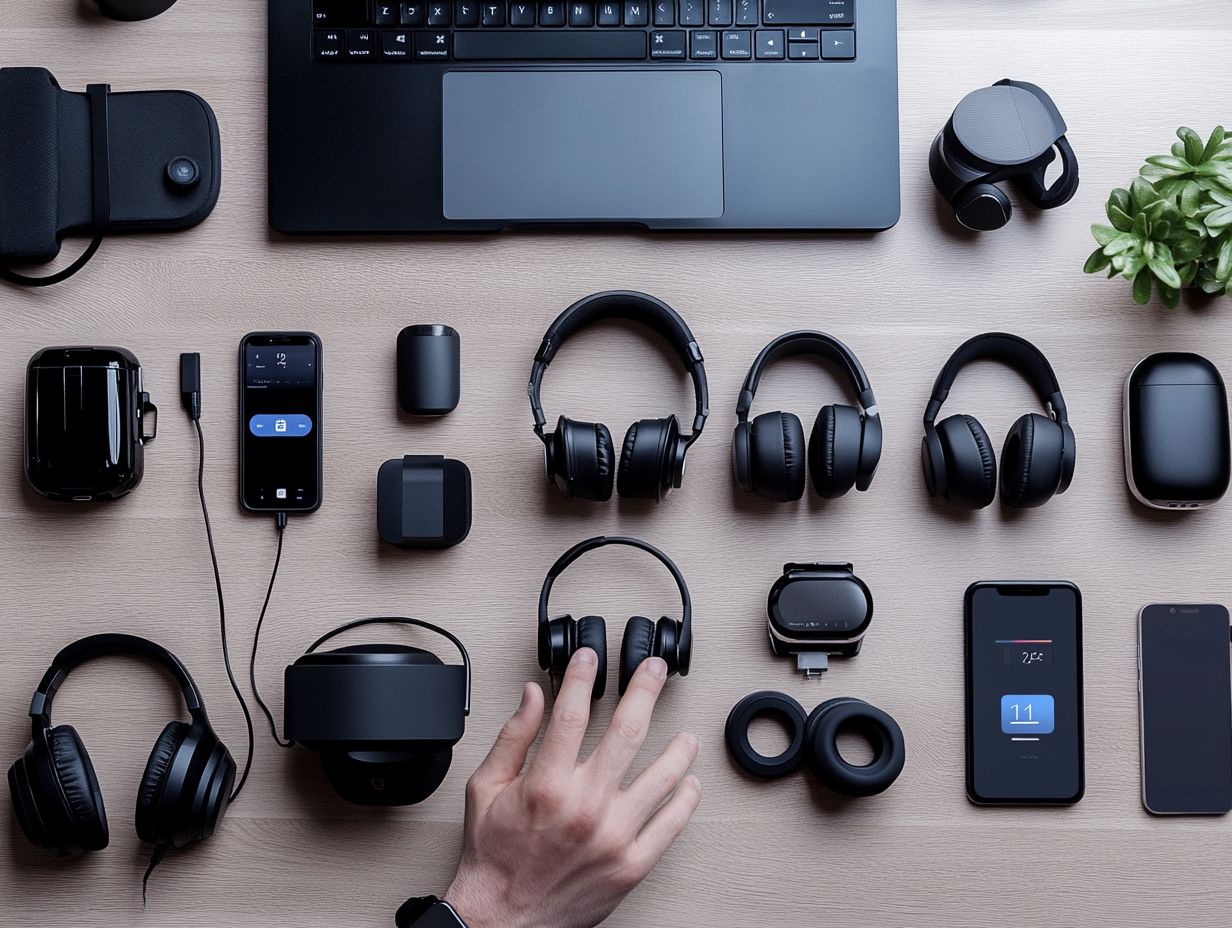
USB headsets offer a seamless plug-and-play experience. Bluetooth headsets provide the luxury of wireless convenience, making them ideal for professional communications.
USB headsets typically deliver lower latency and superior audio quality. These attributes are particularly appreciated during detailed tasks or conference calls.
Bluetooth headsets, on the other hand, offer unmatched mobility. They allow you the freedom to move around your workspace.
Take, for example, the popular over-the-head model, the Jabra Evolve 75. It combines the best of both worlds with a USB dongle for easy connection while seated and Bluetooth support for effortless communication on the go.
Some limitations come with Bluetooth, such as battery life and connectivity issues. This can make USB headsets a more reliable choice for lengthy workdays.
Compatibility with Devices
When choosing a headset, consider how well it works with devices like smartphones and laptops. Different operating systems also play a role in compatibility.
This is essential for ensuring a seamless user experience.
Compatibility with Different Operating Systems
Headset compatibility largely hinges on the operating systems your devices run. Some headsets are crafted specifically for optimal performance with phone apps or standard headset jacks.
You may find that a particular headset works flawlessly with Windows but has difficulties with macOS or Linux systems. This inconsistency often stems from driver support or software integration issues.
If you’re shopping for a headset, think carefully about your needs. Whether for gaming, virtual meetings, or multimedia, ensure it meets your requirements for peak performance.
Selecting headsets that harmonize well with your specific operating system can help mitigate compatibility issues. This will elevate your overall user experience.
Compatibility with Different Devices (smartphones, laptops, etc.)
Different devices like smartphones and laptops require specific headset features for optimal performance. Make sure you know the sound features and compatible accessories.
For instance, if you’re purchasing a headset for your Google Pixel smartphone, consider features like USB-C compatibility and support for high-resolution audio. These aspects can enhance your listening experience.
If you re selecting a headset for Amazon’s Echo devices, Bluetooth connectivity and voice assistant integration are essential. Understanding these details can significantly improve sound quality and usability.
Whether you need noise cancellation for your MacBook or a gaming headset for consoles like the PlayStation, recognizing device compatibility is key to informed purchasing decisions.
Factors to Consider for Headset Compatibility
When assessing headset compatibility, focus on key factors: audio quality, physical design, and comfort.
These factors are vital for a great experience, especially during long periods of use.
Audio Quality and Features
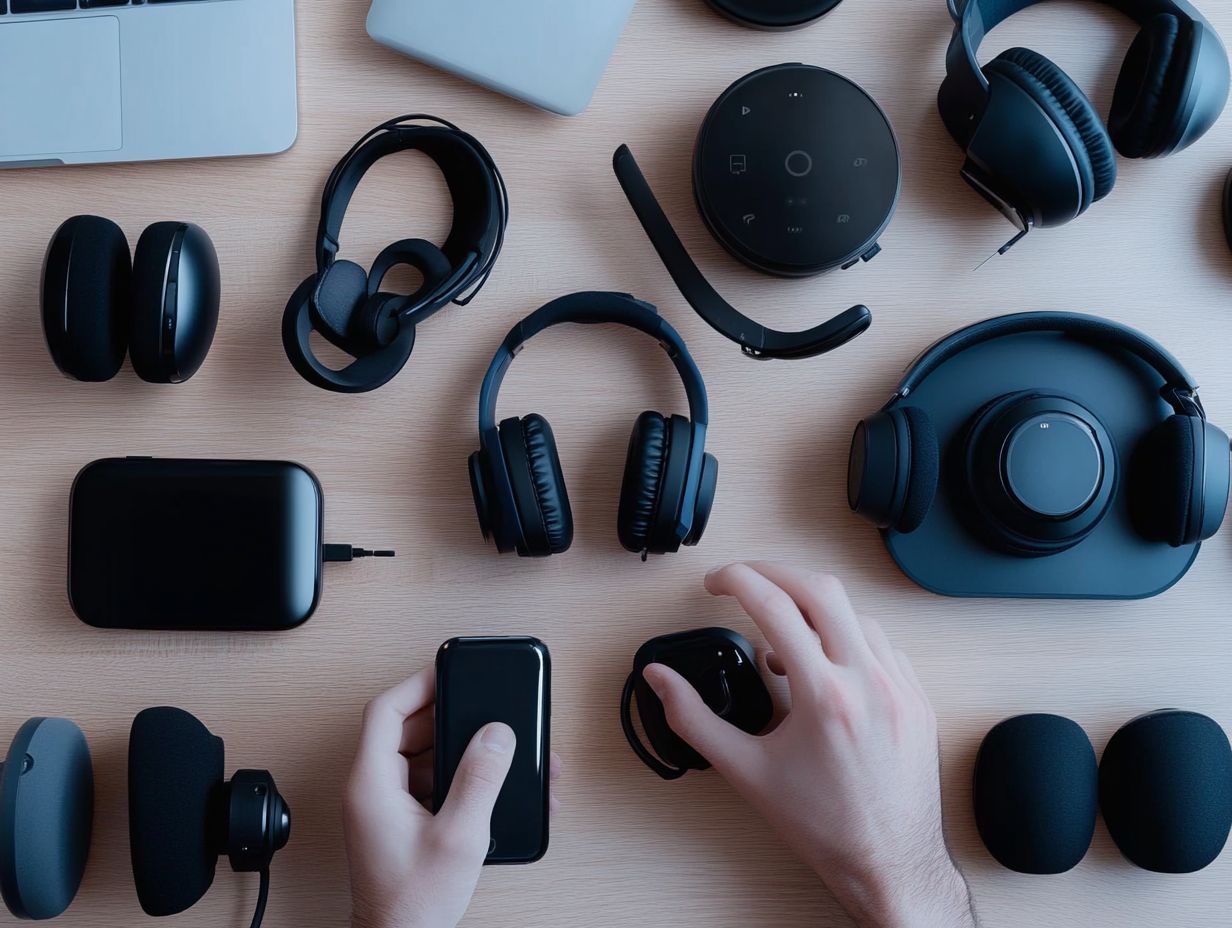
Audio quality is crucial when selecting a headset. Features like noise-canceling capabilities and adjustable microphone volume can greatly enhance your satisfaction.
In settings where background noise disrupts concentration like busy offices or crowded caf s investing in a headset with advanced noise-canceling technology is essential. These headsets create an immersive listening experience, enabling you to focus fully on your audio content.
Enhanced audio performance varies widely among different models. Some headsets excel in bass reproduction, making them perfect for music lovers. Others prioritize clarity, which is beneficial for podcasters and communicators.
Taking the time to evaluate how these features align with your audio preferences is vital for achieving the enjoyment and efficiency you seek.
Physical Design and Comfort
The physical design of a headset is crucial for your comfort. Consider its weight and style, whether it’s over-the-head or more compact.
When you re searching for your perfect headset, prioritize elements like padding material, how tightly it grips your head, and adjustable features tailored to your head size. Experts emphasize ergonomic designs for better comfort, helping prevent fatigue during long listening sessions. This makes them favorites among gamers and professionals alike.
Consumer feedback reveals a vast array of styles, from sleek, travel-friendly profiles to bulkier models brimming with features. This diverse selection allows you to discover a headset that not only meets your practical needs but also aligns with your aesthetic preferences.
Troubleshooting Compatibility Issues
Troubleshooting compatibility issues may seem daunting. However, by identifying common problems and exploring effective solutions, you can streamline the process and ensure your headset performs at its best.
Common Problems and Solutions
Common headset problems often revolve around connectivity issues, low audio quality, or malfunctioning components like the headset jack. Rest assured, numerous solutions are available to tackle these hurdles.
You might find yourself frustrated when your wireless headset refuses to pair with your devices or when the sound quality inexplicably drops due to interference or weak signals.
In these situations, updating the headset’s firmware can often alleviate many connectivity woes. A simple factory reset might also restore any lost audio clarity.
For those using wired headsets, check the integrity of the cables and ensure a snug fit in the audio jack.
Regular cleaning practices can help prevent buildup, ultimately allowing you to enjoy a seamless listening experience.
Tips for Choosing a Compatible Headset
Selecting the right headset requires careful attention to several key factors. You ll want to prioritize audio quality, ensure device compatibility, and familiarize yourself with the compatibility guide.
Taking the time to consider these elements will lead you to a headset that perfectly suits your needs.
Factors to Consider Before Purchasing
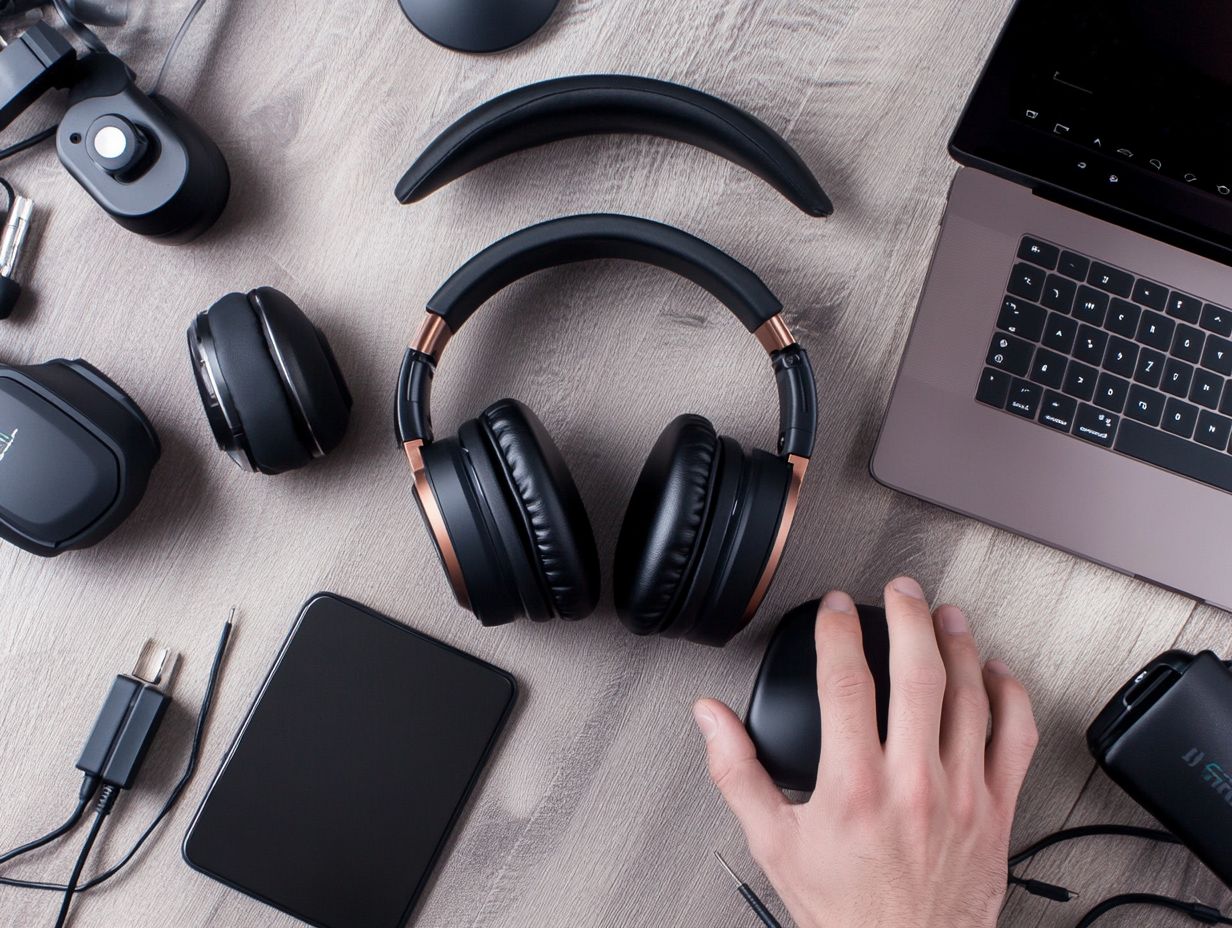
Before you purchase a headset, weigh factors like audio quality, comfort, and compatibility with your existing accessories.
High-quality audio performance is essential for clear conversations, especially in customer service roles. This allows you to understand and respond accurately to client needs.
Comfort is equally important. An ergonomic design that reduces ear fatigue and pressure can greatly enhance your experience during long hours of use.
Don t overlook compatibility with your current accessories, like microphones and audio interfaces. Ensuring seamless integration into your setup will save you headaches down the line.
If you seek personal entertainment, features like noise cancellation and customizable sound profiles can elevate your immersion, catering to your unique preferences and requirements.
Preguntas Frecuentes
Qu es la compatibilidad de auriculares y por qu es importante saberlo?
La compatibilidad de auriculares se refiere a la capacidad de un auricular para funcionar con diferentes dispositivos o sistemas. Es importante conocer esto porque utilizar un auricular incompatible puede resultar en una calidad de audio deficiente o en que el auricular no funcione en absoluto.
C mo puedo saber si un auricular es compatible con mi dispositivo?
Puedes consultar las especificaciones del producto o el embalaje del auricular para ver con qu dispositivos es compatible. Tambi n puedes revisar el sitio web del fabricante o contactar a su servicio al cliente para obtener m s informaci n.
Todos los auriculares son compatibles con todos los dispositivos?
No, no todos los auriculares son compatibles con todos los dispositivos. Algunos est n dise ados espec ficamente para ciertos dispositivos, mientras que otros son m s vers tiles y pueden funcionar con m ltiples dispositivos. Es importante verificar la compatibilidad antes de realizar una compra.
Puedo usar un auricular con un dispositivo que tiene una marca o sistema operativo diferente?
En la mayor a de los casos, s . El auricular debe ser compatible con el puerto del dispositivo y tener las caracter sticas necesarias.
Ten en cuenta que puede haber algunas limitaciones o diferencias en la funcionalidad.
Cu les son los diferentes tipos de compatibilidad de auriculares?
Los auriculares pueden ser con cable o inal mbricos. Tambi n pueden tener un conector USB o de 3.5 mm.
Es crucial saber qu tipo de compatibilidad necesitas antes de comprar.
C mo puedo asegurarme de que mi auricular ser compatible con dispositivos futuros?
Para garantizar la compatibilidad futura, elige un auricular vers til que funcione con m ltiples dispositivos.
Mantente informado sobre nuevos dispositivos y sus requisitos de compatibilidad.

